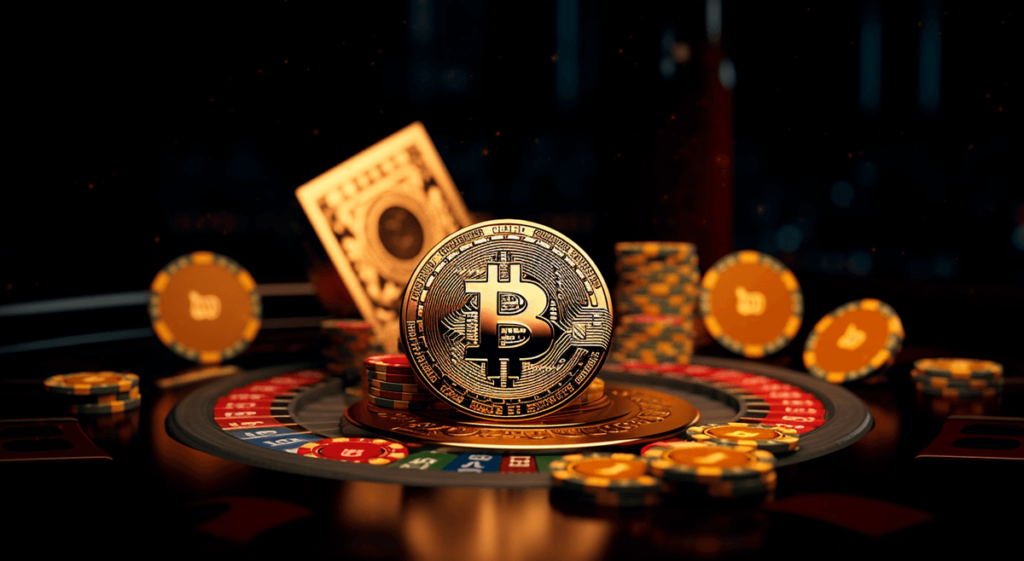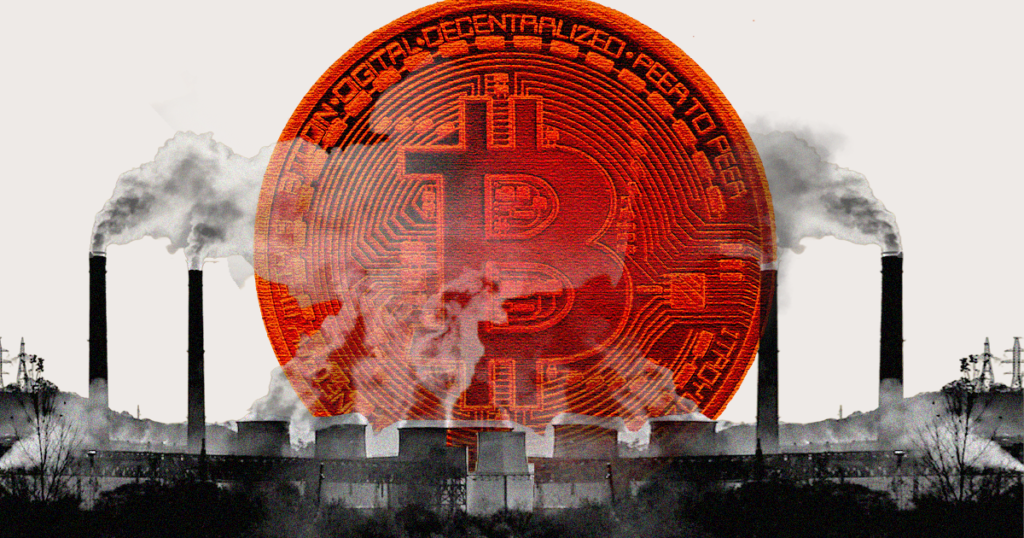With major Bitcoin news breaking almost every day, it seemed like a good time to look at some of the biggest myths and misconceptions people tend to have about the world’s first cryptocurrency, see if they have any merit, and correct the record. If you think, for instance, that its value is “based on nothing” or that it’s too volatile to have any real-world use, this guide is for you. We’re separating fact from fiction — without shying away from legitimate risks — to get to the truth about the world’s most popular cryptocurrency.
Table of Contents
Understanding Bitcoin
Bitcoin is a decentralized digital currency that you can buy, sell and exchange directly, without an intermediary like a bank. It’s creator, Satoshi Nakamoto, originally described the need for “an electronic payment system based on cryptographic proof instead of trust.”
Every Bitcoin transaction that’s ever been made exists on a public ledger accessible to everyone, making transactions hard to reverse and difficult to fake. That’s by design: Core to their decentralized nature, it is’t backed by the government or any issuing institution, and there’s nothing to guarantee their value besides the proof baked in the heart of the system.
“The reason why it’s worth money is simply that we, as people, decided it has value—same as gold,” says Anton Mozgovoy, co-founder & CEO of digital financial service company Holyheld.
Since its public launch in 2009, it has risen dramatically in value. Although it once sold for under $150 per coin, as of June 8, 1 BTC equals around $30,200. Because its supply is limited to 21 million coins, many expect its price to only keep rising as time goes on, especially as more large institutional investors begin treating it as a sort of digital gold to hedge against market volatility and inflation. Currently, there are more than 19 million coins in circulation.
How Does It Work?
Bitcoin is built on a distributed digital record called a blockchain. As the name implies, blockchain is a linked body of data, made up of units called blocks containing information about each transaction, including date and time, total value, buyer and seller, and a unique identifying code for each exchange. Entries are strung together in chronological order, creating a digital chain of blocks.
“Once a block is added to the blockchain, it becomes accessible to anyone who wishes to view it, acting as a public ledger of cryptocurrency transactions,” says Stacey Harris, consultant for Pelicoin, a network of cryptocurrency ATMs.
Blockchain is decentralized, which means it’s not controlled by any one organization. “It’s like a Google Doc that anyone can work on,” says Buchi Okoro, CEO and co-founder of African cryptocurrency exchange Quidax. “Nobody owns it, but anyone who has a link can contribute to it. And as different people update it, your copy also gets updated.”
While the idea that anyone can edit the blockchain might sound risky, it’s actually what makes it trustworthy and secure. For a transaction block to be added to the Bitcoin blockchain, it must be verified by the majority of all Bitcoin holders, and the unique codes used to recognize users’ wallets and transactions must conform to the right encryption pattern.
These codes are long, random numbers, making them incredibly difficult to produce fraudulently. The level of statistical randomness in blockchain verification codes, which are needed for every transaction, greatly reduces the risk anyone can make fraudulent its transactions.
7 biggest Bitcoin myths
Bitcoin, as a pioneering cryptocurrency, has been surrounded by a lot of misinformation. Let’s debunk 7biggest Bitcoin myths:
Myth #1: Bitcoin is a bubble
While it’s true that some people buy Bitcoin as a speculative investment seeking big returns, that doesn’t mean that Bitcoin itself is a bubble. Bubbles are economic cycles characterized by unsustainable rises in market value. They eventually pop when investors realize prices are much higher than an asset’s fundamental value. Bitcoin is occasionally compared to an infamous early speculative bubble: the 17th century Dutch “tulip mania.” In 1637, speculators caused prices for some tulip varieties to surge 26-fold. The bubble lasted six months, crashed, and never recovered.
The real story:
- It has gone through multiple price cycles over the course of over 12 years — and has recovered each time to achieve new highs. As with any new technology, boom and bust cycles are expected. For example, during the dot-com era in the late nineties, many tech stocks saw rapid increases in valuation followed by significant crashes. Amazon’s stock, for instance, plummeted from around $100 to just $5 at the end of the dot-com bubble, only to become one of the most valuable companies in the world in the subsequent decades. This highlights how speculative bubbles can affect various asset classes, including cryptoassets, which may experience similar volatility and risk before stabilizing or achieving long-term growth.
- Some major Bitcoin investors believe that it’s oscillations form a pattern typical of young markets. Bitcoin, they say, will surge and recede with smaller swings and longer durations between them until at some point in the future it settles into relative stability. But only time will tell.
Myth #2: Bitcoin has no real-world uses
Critics like to claim that it isn’t useful in the real world — or if it does have a use, it’s mostly useful for illicit activity. Neither of those statements are true. It has a long history as a means of making payments to anyone in the world, all without a bank or payment processor in the middle. And it is increasingly being used as an hedge against inflation by major institutional investors.
The real story:
- In recent years, it has become increasingly popular as an inflation-resistant store of value much like gold — leading to Bitcoin’s “digital gold” nickname. A growing number of major funds and publicly traded companies (Tesla, Square, MicroStrategy) have bought millions or even billions of dollars worth of it as a means to better manage their assets.
- Much like gold, it is scarce (there will never be more than 21 million Bitcoin). Gold, however, has a long history as a store of value and is recognized globally for its stability and tangibility. Gold’s physical nature makes it a tangible asset that people have trusted for centuries, whereas it is digital and intangible, which can be seen as a disadvantage by those who prefer physical assets.
- Gold is also relatively stable in terms of price volatility. Bitcoin, on the other hand, is known for its significant price fluctuations, which can offer opportunities for high returns but also come with higher risk.
- In terms of convenience, it can be sent digitally as easily as sending an email, making it more suitable for modern financial transactions. Gold is heavy, bulky, and difficult to transport and store, which can be a logistical challenge.
- It received negative attention in its early years as a means of payment on the dark web. But when the first big dark-web market was shuttered, Bitcoin prices went up after just a few days — and continued to rise.
- Like any form of money, some of it will be misused. But compared to US dollars, illicit use of it is a drop in the bucket. According to a report, 2.1% of Bitcoin transaction volume in 2019 was related to criminal enterprise.
- And because all Bitcoin transactions happen on an open blockchain, it’s often easier for authorities to track illicit activity than it would be in the traditional financial system.
Myth #3: Bitcoin doesn’t have real value
While it might not be backed by a physical asset like gold, neither is the US dollar or virtually any other modern fiat currency. It is hard-coded to be scarce, which helps make it resistant to inflation. Inflation with fiat currencies can occur when large quantities are created, thus diluting the existing supply .
The real story:
- There will only ever be 21 million bitcoin. This scarcity is a major driver of its value.
- Not only is the supply capped, but the amount of new Bitcoin being mined is declining over time in a predictable way. Every four years, in an event called a “halving,” block rewards paid to miners in the network are cut in half.
- This helps ensure that the supply is always reducing which, by the basic economic principle of scarcity, has worked to keep the price of Bitcoin broadly trending upwards over the long-term — from less than a penny at the start to more than $66,000 as of mid-April, 2024. (See Bitcoin’s current price.)
- Bitcoin also derives value from the work the computers on the network contribute via a process called mining. Powerful computers all over the world supply a vast amount of processing power towards the work of validating and securing every transaction (in exchange they’re rewarded with new Bitcoin).

Myth #4: Bitcoin will just be replaced by a competitor
It was the first really successful digital money. And while new cryptocurrencies have long promised to overtake Bitcoin via new features or other advantages, none have come close.
The real story:
- Though thousands of rival cryptocurrencies have been created over the past decade, it has always been and remains the most valuable cryptocurrency by market cap by a significant margin.
- It’s also the most popular, making up around 60% of the crypto market.
- Reasons include it’s “first-mover” advantage, along with the purity of its mission as a decentralized and open currency.
- Which isn’t to say that competitors aren’t welcome to try. It is decentralized, meaning it’s operated by a global community of miners and nodes, instead of a central authority.
- For example, if it’s underlying architecture has to change in order to add new functionality, features, or to protect against a newly-discovered bug, the community can initiate a fork to upgrade the network.
- In order for the upgrade to be accepted, a 51% majority of the community must support the change. This allows Bitcoin to adapt and evolve as required, as seen with Bitcoin’s Segregated Witness (“SegWit”) upgrade in 2017.
- Because the software is open-source, developers who aren’t able to gain community consensus can even create a hard-fork of the Bitcoin blockchain and make an entirely new cryptocurrency. For instance, Bitcoin Cash was created this way — but so far no Bitcoin clones have come anywhere close to replacing the original.
- Of course, a huge amount of innovation is happening in the space, so it’s conceivable that a bigger rival could emerge. But given current circumstances most experts don’t think Bitcoin being replaced anytime soon is a likely outcome.
Myth #5: Investing in Bitcoin is gambling
While it’s true that it has experienced significant price volatility over the last decade, that’s to be expected of a young and growing market. Since Bitcoin’s genesis block in 2010, it has steadily gained long-term value — with a market cap exceeding $1300 billion (as of April 2024; see the current market cap). And as s Bitcoin continues to mature, regulatory structures are increasing alongside greater institutional adoption. (Tesla, hedge funds).
The whole story:
- There is a fundamental rationale for a Bitcoin investor to believe that the value of their holdings should rise — whereas in a casino you know the odds are tilted in favor of the house. Of course there is no guarantee about future performance or continued results, but Bitcoin’s long term trendline over the last decade has been upward.
- One popular investing strategy for reducing the impact of volatility is dollar-cost averaging — in which you invest a fixed amount every week or month no matter what the market is doing.
- Its volatility appears to be on the decline. A recent Bloomberg analysis compared Bitcoin’s recent bull run to the 2017 boom — and found that volatility is considerably lower this time around. Why? The rise of institutional participants and the general stabilizing effect of crypto “going mainstream.”
- In the beginning of 2024, a significant development occurred in the world of its investment. Spot ETFs for it were officially approved in the US, marking a pivotal moment for the cryptocurrency. Unlike before, where its investments could be seen as gambling, these ETFs offer a structured and regulated way to invest in it. With increased oversight and regulation, these ETFs have the potential to attract a broader range of investors. As a result, Bitcoin may become more seamlessly integrated into traditional investment portfolios.
- Whether Bitcoin or any other cryptocurrency has a place in your investment portfolio depends on your personal circumstances, risk tolerance, and investment time horizon. And even though it has trended steadily upwards in over the past decade, it also has had substantial down cycles. Investors should be careful navigating volatile markets (and consider working with a financial advisor before making major investments).

Myth #6: Bitcoin isn’t secure
The Bitcoin network has never been hacked. Its open-source code has been scrutinized by countless security experts and computer scientists. It was also the first digital currency to solve the double-spend problem, making “trustless” peer-to-peer currencies a reality. Further, All its transactions are irreversible.
The real story:
- Many misconceptions around the security of Bitcoin stem from attacks on third-party businesses and services that make use of it, and not the Bitcoin network itself. High-profile hacks of early it companies with flawed security procedures (like the one that hit the early Japan-based exchange Mt. Gox) and occasional data breaches (like the one that impacted users of the wallet provider Ledger) have made some users question the security of it.
- It’s core protocol has functioned securely with 99.9% uptime since its creation in 2009.
- A vast amount of computing power secures the network. And the miners that power the network are distributed throughout the world, with nodes in 100 countries — which means there are no single points of failure.
Myth #7: Bitcoin is bad for the environment
Bitcoin mining is an energy-intensive process. But determining the environmental impact is hard. For one thing, all aspects of the digital economy require energy. Consider the entire global banking system, and all of the energy required to process bank transactions and power office buildings, ATMs, local branches, and much more.
The real story:
- Recent research by New York-based fund Ark Investment Management concludes that “It is much more efficient than traditional banking and gold mining on a global scale.”
- A significant portion of Bitcoin mining is powered by renewable-energy sources (including wind, hydro, and solar). The actual number ranges from 20 percent to more than 70 percent, according to Cambridge Bitcoin Electricity Consumption Index.
- The Cambridge researchers concluded: “It’s environmental footprint currently remains marginal at best.”
- An argument can even be made that the economic incentives inherent to Bitcoin mining are helping drive sustainable energy innovation, as miners constantly seek to increase profits by lowering their electricity costs — in a world where renewable energy is fast becoming the cheapest option.

Disclaimer ||
The Information provided on this website article does not constitute investment advice ,financial advice,trading advice,or any other sort of advice and you should not treat any of the website’s content as such.
Always do your own research! DYOR NFA
Coin Data Cap does not recommend that any cryptocurrency should be bought, sold or held by you, Do Conduct your own due diligence and consult your financial adviser before making any investment decisions!



